When I entered law enforcement in the mid-1970’s, cop dramas were popular on network television. I watched my share of these programs which focused mostly on the investigative side of law enforcement. The backstory of any investigation can be more dramatized than the day-to-day routine of patrol, which is just that - routine. But there were those moments when the excitement level would ratchet up and it was this not knowing from minute to minute, what would happen, that made me love the job.
Anyway, the cop T.V. shows always showed the detectives with their snub revolvers hanging out of the jackets suspended in leather paddle holsters. Now, I realize this was the choice of a prop master somewhere and not done for realism, but the truth of the matter was, easy on and off paddle holsters were popular with plainclothes law enforcement officers nationwide. We should probably distinguish the difference between a plainclothes holster and a concealment holster.
Concealment means hidden, unseen whereas a plainclothes holster was designed to ride comfortably, all day, under the suit coat of an officer or deputy assigned to a plainclothes position. It really didn’t matter if the gun could be seen due to the official status of the wearer. In many cases, both then and today, plainclothes officers wore their guns totally exposed next to a belt mounted badge in hot weather. Investigators aren’t undercover, they are not really trying to hide their identity.
The paddle holster of that era was nothing more than a pouch formed for the handgun with the addition of some type of open bottom plate on the back. In some cases, the hip plate was a formed piece of steel with a suede covering while in other cases, it was just a leather “tongue” that was placed under the belt and the trouser band. Seldom were such rigs truly hidden, bulky clothes had to be worn over them. It was the easy on and off convenience that made the rig desirable. The gun and holster could be removed as one unit, keeping the gun safely inside the holster pouch helping to eliminate negligent or “accidental” discharges.
As the move from revolvers to pistols became the norm, the paddle holster did not really change. The same back plate remained; it was merely the holster pouch that changed. In some cases, the plate was totally inappropriate for the larger, grip heavy pistol but it was the way they made the holster in the past so it was “just fine” now.
That’s wrong. A grip heavy pistol is different than a revolver with its weight in the center.
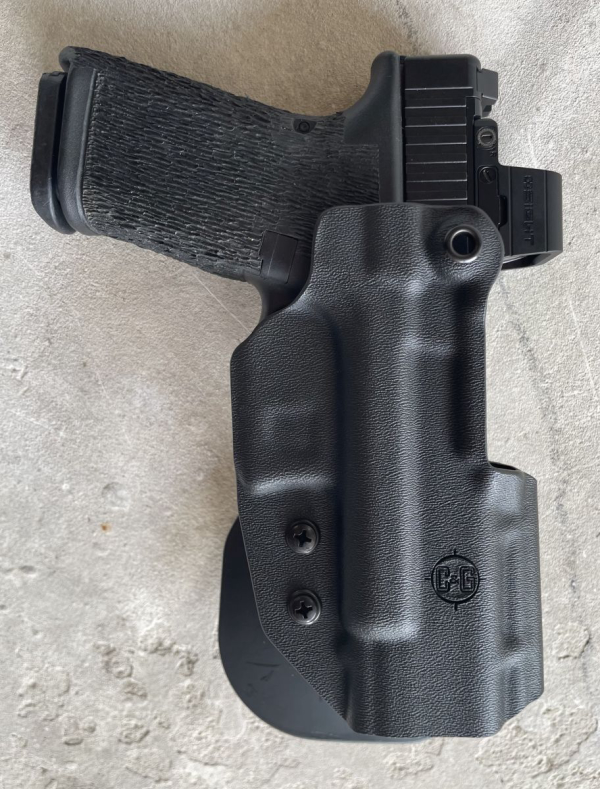
According to industry insiders, we are seeing a renewed interest in the paddle holster. Not everyone wants to carry forward of the hip, but they do like the on and off convenience offered by such rigs so shooters are looking, once again, at the paddle holster. Most holster manufacturers offer such a rig and they share similar features. I decided to look at two of the more popular rigs to get an idea of where this classic holster design stands today.
The C & G Holsters Trinity holster is actually a complete system, designed to meet a wide variety of needs across the law enforcement, military and the EDC spectrum. The Trinity ensures solid retention and compatibility with all of the different attachments. C & G uses high-quality, thick Kydex to guarantee durability and reliability in high-stress situations. The Trinity is built using cutting-edge 3D scanning and CAD modeling, offering unmatched precision to 0.003" tolerance, ensuring a perfect firearm fit. In addition, the Trinity offers a universal optic compatibility, including larger optics like the SRO and ACRO P-2s, enhancing functionality and versatility.

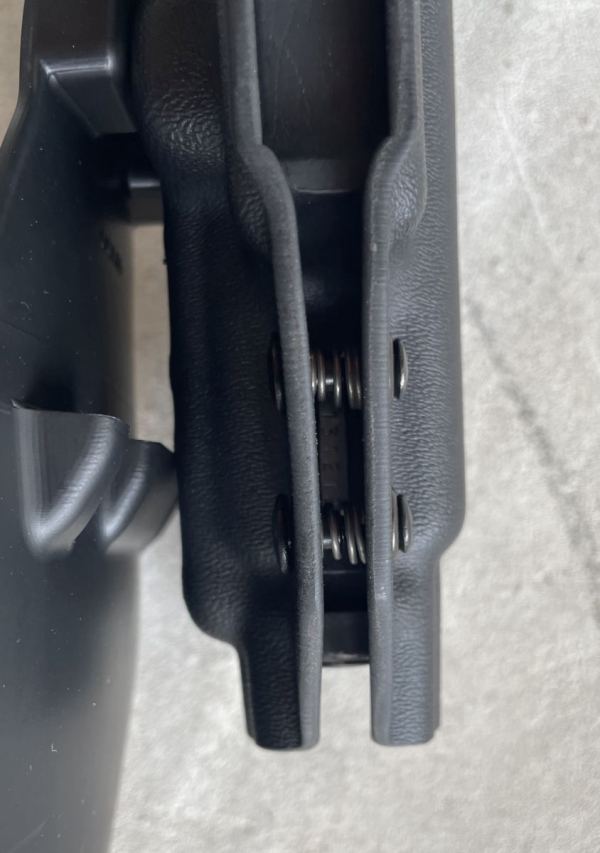
The paddle supplied for the Trinity is from G-Code and offers a contoured hip plate with locking lugs towards the bottom that will engage the bottom of the belt and trouser band to keep a grip-heavy pistol for rocking back and forth. It is also completely adjustable for the desired cant which will help acquire a proper grip. The holster pouch offers a very generous “speed cut” on the front to aid in a fast draw while tension screws on the back of the pouch will allow the end user to adjust for the desired amount of weapon retention. All C & G Holsters are proudly made in America and offer a lifetime warranty.
I used the Trinity in several of my practice sessions and found it to be a real performer! No, it does not ride as close to the body as a pancake-style OWB rig, but it is easily concealed under a loose-fitting garment like a jacket, coat or even a flannel shirt.
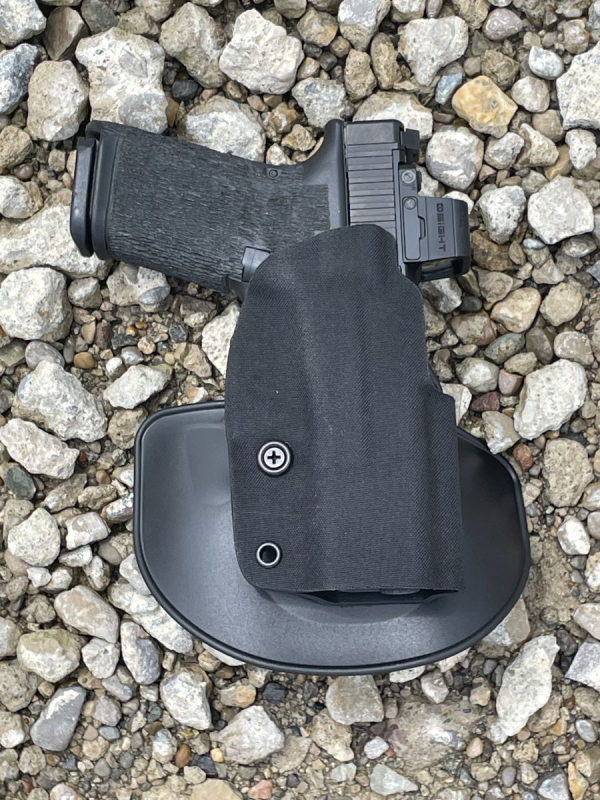
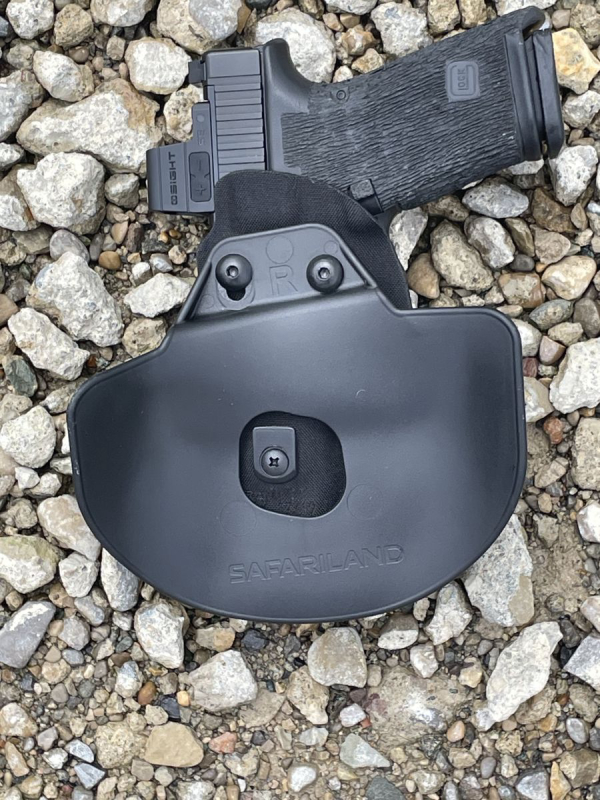
Safariland only recently introduced their Gravity paddle rig and it is already growing in popularity. Like the Trinity rig, the Gravity is also part of a system that will permit different attachments for different end uses. The supplied paddle is a wide, countered version that is flat behind the holster to help pull it close to the body. As it flares outward, it offers a hip contour that helps hold it solidly in place. There is a locking lug on the back of their holster pouch that fits through a hole in the paddle, making accidental removal all but impossible.
The Gravity is best described as a lightweight OWB design with an open-top and low-cut sides permitting an easy draw. Its compact size makes it well suited for every day or off-duty carry. The trigger guard detent offers adjustable tension to secure the gun in the holster during rigorous activity for reliable carry. This detente is fully adjustable. Durable thermoformed SafariLaminate construction makes this holster tough enough for daily use while the Nylon Cordura exterior finish keeps it looking good for years to come.
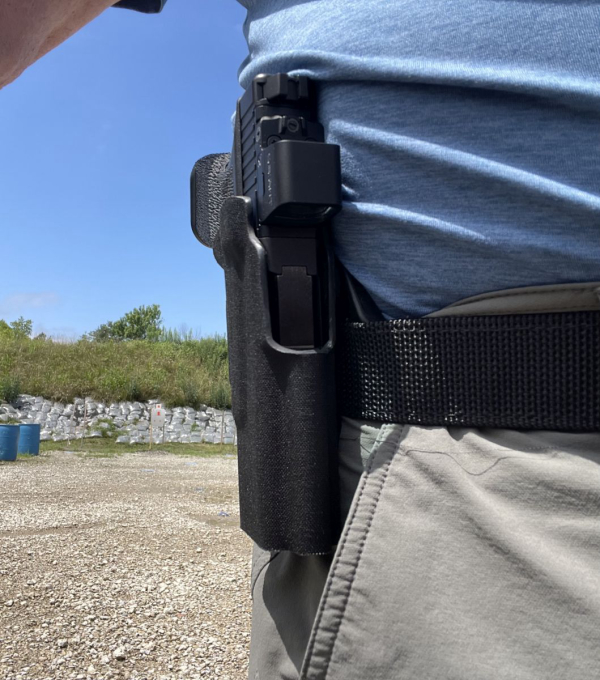
The first thing I noticed about the Gravity as I put it on was its close to the body fit. It rides about as close as a pouch-style holster can. I also liked the adjustable cant offered by the paddle attachment. I had shoulder surgery years ago that left me with limited flexibility in my right shoulder. Being able to adjust the position of the pistol grip is a huge asset to me and the Gravity, as well as the Trinity, did that for me. Let’s be honest, a quality paddle rig must be more than easy on and off, it must also be reasonably concealable and long term comfortable. Both of these rigs are just that, as well as being a 21st century design.
— Dave Spaulding